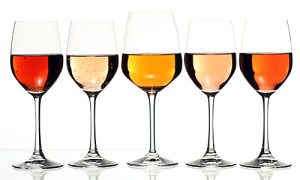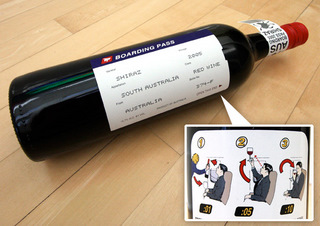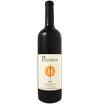 Earlier this week, I attended RAPwine‘s (RAP stands for Rosé Avengers and Producers) Pink Out! event in San Francisco. In the interest of full disclosure, I was invited to the Trade/Media tasting, which was provided free of charge. RAP also held a consumer tasting later in the day, and tickets for that cost somewhere around the $40 mark. It was a sellout.
Earlier this week, I attended RAPwine‘s (RAP stands for Rosé Avengers and Producers) Pink Out! event in San Francisco. In the interest of full disclosure, I was invited to the Trade/Media tasting, which was provided free of charge. RAP also held a consumer tasting later in the day, and tickets for that cost somewhere around the $40 mark. It was a sellout.
When I was just starting out as a wine merchant (a little less than a decade ago now) we offered free daily tastings at the shop where I worked. At regular intervals in the Spring and Summer, we’d pop open a rosé for the daily tasting. I hated working the tasting bar on these days. Not because I hated rosé. (For the record I loved it and still do.) But because I hated rejection. On those days, when I offered a free taste of pink wine, 99% of customers who walked through the door would turn me down. Many did so by recoiling in horror at the suggestion, many scoffed, others laughed and asked “are you kidding?” I remember very clearly the face of one man who looked at me with a combination of pity and disdain. On rosé days, I always went home feeling drained and dejected.
For the record, I blame White Zinfandel — Sutter Home, Lancer’s, Mateus, whatever. Because of its ubiquitous presence at every airport bar, office party, and Oliver Garden in America social wine drinkers clearly went through a period of White Zin induced PTSD, unable to unlock the mechanism in their brains which, when it saw pink, immediately thought sweet; unable to understand that it didn’t always have to be that way. One thing I learned from attending RAP’s PinkOut! tasting? We have definitely recovered.
Recent studies have shown that over the last couple of years, during a down economy when the wine industry as a whole has been struggling to stay afloat, rosé producers have been enjoying a renaissance. In fact, sales of imported rosés were up 28% last year. A huge number given economic conditions. When researchers talk about imported rosés, they’re really talking about France, and when talking about French rosés, they’re really talking about Provence, which accounts for about 40% of all the pink wine produced in that country. It also sets the standard for what a blush can really be — pale-hued, mouthwateringly refreshing, with elegant minerality and subtle fruit. Interestingly, at the PinkOut! tasting, only two Provençal rosés were on offer. The vast majority of wines were from California. Interesting, given that 10 years ago very few CA producers (but for the Sutter Homes, Beringers, Gallos and the like) were even making rosé. A fact borne out by my own simple research. As I worked my way around the tasting, I asked every winery representative I met how long they had been producing rosé. The vast majority told me that it was their second or third vintage.
Not that that’s a bad thing. One of my favorite wines of the day was one called Lorenza ($20). A pink wine produced by the mother-daughter team of Melinda Kearney and Michele Ouellet at Intersection Wine Company from a blend of Mourvèdre, Carignane, Grenache, Cinsault, and Syrah. In only its second vintage, this wine showed the kind of charm, restraint, and elegance I tend to favor. It wasn’t a hot pink hued wine bursting with ripe berry fruit. Rather, it was a cool, crisp pour without even a whisper of residual sugar.
Speaking of color, I’ve focused a lot here on pale pinks, but the fact is that rosé comes in every hue from carnation to magenta, and I was a little surprised at the number of wines at the PinkOut! event that tended toward the latter. While scanning my notes, I noticed that I wrote the words fuscia and hot pink quite a few times to describe a wine’s color. This made me wonder if more domestic rosés tend to fall into the darker end of the spectrum? Seems to me that it would be a possibility given American red wine drinkers’ penchant for dark wines. Maybe the same follows for pinks?
I’m not typically one to advocate for trends, but in the case of pink wine I’ll make an exception. Drink more pink…regardless of whether you like it salmon-hued or fuscia. Just promise me it won’t be Boone’s Farm.
 Welcome to
Welcome to 


